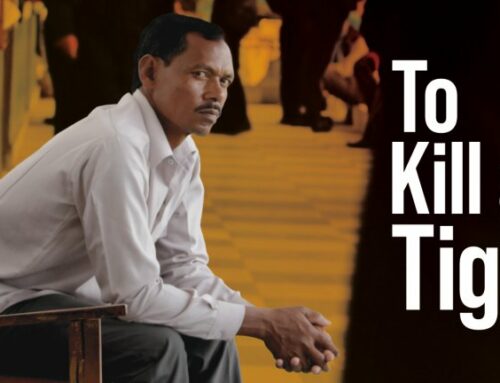AMY—the searing new documentary about the incandescent, singer songwriter Amy Winehouse is so viscerally and intellectually alive, it’s as if she’s been conjured up again and we’ve had to suffer the loss of her for the first time. The film by award-winning British filmmaker Asif Kapadia gets to the heart and soul, skin and bones of this absolutely pure artist who came into the world with parents who put the “in” in “inept.” But they somehow managed to produce a magical amalgam of genetic material and deliver a full-blown artist almost from the outset.
Amy Winehouse was only 27 when she collapsed beneath the crush of drugs, alcohol, bulimia, and a rabid public. A flawed human being, she was a flawless talent whose voice channeled a world of feeling and insight she could hardly have experienced and yet she did. The only other artist who begs comparison is Jimi Hendrix who played the guitar like it was part of his anatomy. Winehouse sang as easily as breathing, with huge emotional power and nuance. She had the chops and soul of a seasoned black jazz singer in the body of a slight, white British schoolgirl. She herself said, “The more people see of me the more they’ll realize that all I’m good for is making music.”
I confess, I knew little about Amy Winehouse before this documentary. I recognized her talent and that ubiquitous hit about her refusal to “go to rehab.” The film drives home the irony and the tragedy of that hook and blames those closest to her—her mother who was timid and oblivious, and her father who abandoned the family when she was nine, but later, when she was famous, turned up and looked right past her to his own aggrandizement.
The film is loosely chronological and synthesizes an expansive range of material: interviews from friends, colleagues, family, as well as unheard tracks, and a landslide of visuals from rough home movies, to raw cell phone video, all of which capture the rough and tumble life and often ill-informed choices Winehouse made.
We see the 14 year-old Amy riffing on a rendition of “Happy Birthday, ” her spontaneous musical embellishments an indication of inspired vocal improvs to come. Winehouse’s voice gradually emerged as a conduit to a boundless well of feeling, teasingly behind the beat yet never breaking the swing or the pitch, her elastic phrasing unlocking layers of vocal and verbal resonance. The lyrics from the many songs she wrote poured from the heartache of unmet childhood longing, and later the disappointments of passionate love.
The documentary takes us inside her process. The words to her songs appear on screen as she sings them, as if they are just being written, sometimes over manuscripts of her own handwriting. The lyrics seemed to ooze from her pores, the melodies taking shape organically around the phrases. We watch voyeur-like as she sings in the recording booth, and marvel at her splendid ease and humor.
Many voices weigh in—her venal father, her lifelong girlfriends, her narrow-eyed boyfriend/husband Blake, who ditched her for a former lover, then returned on the cusp of her fame, just in time to suck up some of her spotlight and lead her into heroin addiction. The two of them are like broken puzzle pieces, lonely children of divorced parents hooked together in a mutual fantasy of seduction and destruction.
Kapadia shapes this raw material in extraordinarily evocative ways: Amy curled up on the floor in a cocoon of depression, the audience at eye level, hearing her sing while watching her horizontal suffering; Amy standing saucer-eyed and shocked at hearing her name called as the winner of a Grammy; the barely recognizable Amy bony from the ravages of bulimia, turning in slow mo, toward and away from camera as we try to catch every bit of her. So funny are the snippets of her answering the insipid questions of TV talk show hosts while she sits bemused and “out of it.” So cruel are the jokes cracked later at her expense by Leno, Letterman and their ilk. What’s clear is that Winehouse was the opposite of a snob—she was completely herself, a true innocent, sincerely unable to make a false move. It’s remarkable how fake everyone around her looks in comparison.
And so our hearts break for her as she stands on the precipice of an audience of thousands, at a concert in Serbia on a tour she begged not to do but which her promoters and father arranged anyway. They literally kidnapped her to get her onstage, where the crowd begged her to sing, then turned on her when she couldn’t.
Her sudden suffocating fame was the final nail in the coffin. Kapadia captures better than anyone ever has, the white hot burn of flash cameras, scalding her blind as she makes her way from doorway to limo unable to shield herself as she physically falls apart. Hoist with “their” own petard, the paparazzi whose own video was brilliantly used here, take a big hit.
I learned so much from this documentary. As we watch Amy sing with Tony Bennett, it’s clear he is mightily impressed and that she more than holds her own. In the film’s penultimate moments, the singer’s singer says he wishes he could have convinced her to slow down, take her time, and that if she could, life would teach her how to live it; that she was too important and her gift too great to be so unprotected. I learned how monumental a talent she had. I came as close as I ever have to understanding what jazz is.
Finally, the filmmaker is to be praised for not being waylaid by the criticism that it was “too soon” to make a documentary about Amy Winehouse. What Kapadia and company have given us is a true and deep slice of a woman’s life while our recollections are fresh enough to sting and even tempt us into imagining that there’s still time to save her, followed by the ache of knowing she is forever out of reach. The film restores her to us at full throttle and I am glad– and so very sad.
I could go on, and I have, but I’m done and done in, haunted by this film and the artist it so clearly captures, AMY–one of the best films of this year or any year, ever.






[…] vision can make the most impact. The film hits you like an old fashioned punch in the gut. 5) AMY— This searing documentary about the incandescent, singer songwriter Amy Winehouse is so […]